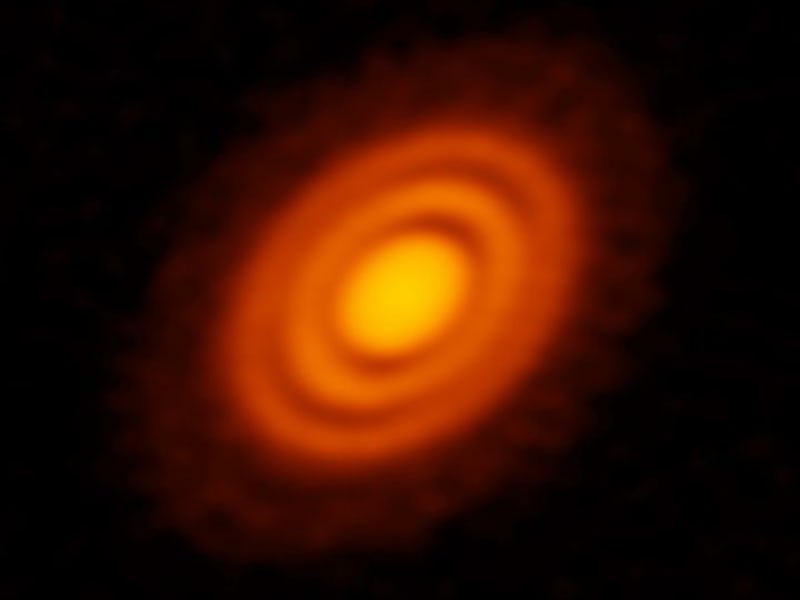Twin Planet Discovery is Game Changer in Finding New Worlds

Almost all of the planets in our galaxy astronomers have identified orbit mature stars. Almost. A team of researchers have just spotted a pair of infant planets nesting around young star, challenging our assumptions about the limits of planetary formation and suggesting new worlds in the universe can form in places more unexpected than we thought.
In observations made using the Atacama Large Millimeter/submillimeter Array (ALMA) in Chile, the star, HD 163296, showed gaps in its protoplanetary disk and dips in the carbon monoxide of its outer gas. The existence of these two features in concert makes scientists suspect that two planets are coalescing there, leaving behind imprints in the material around HD 163296. So the planets are young, too — nascent, not yet fully formed, and both about the size of Saturn. This is the first time ALMA has been used to observe disks and gas molecules at the same level of detail. The findings were published Monday in a Physical Review Letters paper.
“ALMA has shown us amazing images and never-before-seen views of the rings and gaps around young stars that could be the hallmarks of planet formation. However, since we were only looking at the dust in the disks with sufficient detail, we couldn’t be sure what created these features,” said lead author Andrea Isella, an astronomer at Rice University in Houston, Texas, in a news release.
Artist's rendering of the protoplanetary disks - the brown rings are dust; the light blue, gas.
It’s rare to observe planetary systems around young stars. When we’re lucky enough to find them, as when ALMA took similar images of HL Tauri and TW Hydrae, they add to the compelling evidence that planets can begin coalescing around a star as soon as the protoplanetary disk is formed — much sooner than scientists previously thought possible.
HD 163296 itself lies 400 light-years from Earth in the direction of the constellation Sagittarius. It’s around five million years old and twice the size of our own Sun, which for reference is a significantly more mature 4.6 billion years old.
“Dust and gas behave very differently around young stars,” Isella said. “We know, for example, that there are certain chemical and physical process that can produce ringed structures in the dust like the ones we have seen previously. We certainly believe these structures could be the work of a nascent planet plowing through the dust, but we simply can’t rule out other possible explanations. Our new observations provide intriguing evidence that planets are indeed forming around this one young star.”